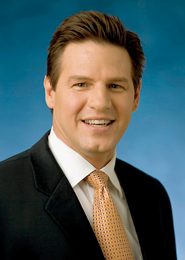Call it the battle of the seen versus the unseen. The "trade-at" question in the Securities and Exchange Commission concept release pits the public exchanges against brokers who internalize trades and other off board liquidity providers.

In its Jan. 13 concept release, the SEC raised several questions about undisplayed liquidity’s impact on price discovery. Trade-at is essentially a question regarding order handling and the routing of orders to the best price. It would shift liquidity from internalized sources, such as broker-dealer dark pools or other non-displayed liquidity providers, to the displayed markets.
The trade-at issue is something akin to the time-tested retail strategy of not only matching a competitor’s best advertised price, but also beating it–price improvement.
However well that works in the retail consumer industry for TVs, washers and dryers, the subject hasn’t captured an enthusiastic endorsement from traders and industry executives.
According to some, the clear beneficiaries of trade-at are the exchanges as their trading flows and fees should increase.
"Questions about market quality aside, this debate is really a market-share grab between brokers and exchanges," said consultant Bill Harts. "The amount of order flow being internalized right now probably isn’t large enough to affect price discovery. The SEC is taking a proactive approach by asking, ‘What if it ever gets that large?’"
Many believe that the SEC is raising the question of whether or not internalization and dark pools are bad for price discovery, the public markets and investors. Trade-at is not a rule proposal at this time, but one of hundreds of questions the SEC has posed in its concept release to the industry, as it reviews how today’s equities markets function.
If trade-at is formally proposed as a rule and passed, it would fall under Section 11A of the Securities Exchange Act of 1934. The SEC describes trading centers as exchanges, ECNs, over-the-counter market makers and dark pools. The SEC asks whether trade-at should affect them all or just some.
For example, such a rule would require "trading centers," including brokers, to route an order to the best price in the market, unless they are holding a limit order at that price. Of course, a trade-at rule would allow a broker to execute an order at a penny better than the national best bid or offer, giving an investor price improvement. But a broker would not be able to execute a client order, or match, the best bid or offer in the marketplace without price-improving.
Spokespeople at BATS Exchange and Direct Edge declined comment. However, both are in the process of submitting comment letters to the SEC. Calls for comment from NYSE Euronext and Nasdaq were unreturned.
Trading executives see no reason for the rule, given that off-board or internalized trading is only 20 percent of total market volume and the remaining 80 percent of trading flows are still done publicly. Prices, they contend, haven’t suffered and liquidity has actually been improved, bringing more retail investors into the trading markets and keeping commissions low.
"In our minds, the most detrimental issue when it comes to trade-at is of information leakage," said Chris Nagy, managing director, order routing sales and strategy at TD Ameritrade. "If the retail order gets executed at the exchange, the high frequency traders and others will likely cancel their orders and retail clients will wind up paying higher market fees and inferior execution prices due to the information leakage."

Nagy said retail investors, who get information and trade via the Web at home cannot compete with HFTs low latency servers that are co-located with the exchanges. "Our size and the way we execute trades has brought commissions down and retail participation up, so trade-at seems to go against both these," Nagy said.
Academics have weighed in on the effects of a trade-at rule. The Shadow Financial Regulatory Committee, an advisory group composed of 12 academics, wrote in a comment letter to the SEC that focusing on long-term investors and trying to protect the direct retail trader reflects a naive view of the interests of investors and traders.
Furthermore, when referring to price impact and trading, the authors said it is inappropriate for the SEC to dictate the trading strategy as well as the display requirements of institutional orders, unless it can demonstrate strong externalities associated with the display.
"The equities market is working. Particularly when you look at how bid/ask spreads are narrowing, it’s been good for investors," said Howard Meyerson, general counsel at Liquidnet. "There are still challenges for institutional traders, but it’s better to let traders work through those challenges than have the SEC dictate how they can or cannot trade."
Buyside traders are not in favor of a trade-at rule, either. According to one source who recently attended a buyside conference in New York, a straw poll was conducted on the question and not one buysider in the room raised his or her hand in favor of the rule.
Robert Colby, counsel at Davis Polk and former deputy director of the SEC’s Division of Trading and Markets, says the trade-at concept would change the way the market operates. The SEC, he said, will take its time researching the topic before proposing and passing such a rule.
"This rule is very powerful; it would change dramatically the way markets currently operate," Colby said. "The SEC staff will need to do a lot of work to justify a formal rule. We won’t know until the comments are in how difficult it will be to conclude that this rule is warranted."
Len Amoruso, chief compliance officer and general counsel at Knight Capital Group agreed and said more research and data on market performance needs to be conducted to determine if the market is in need of trade-at.
"Trade-at is a solution in search of a problem," Amoruso said. "However, we don’t know exactly what the problem is yet."
